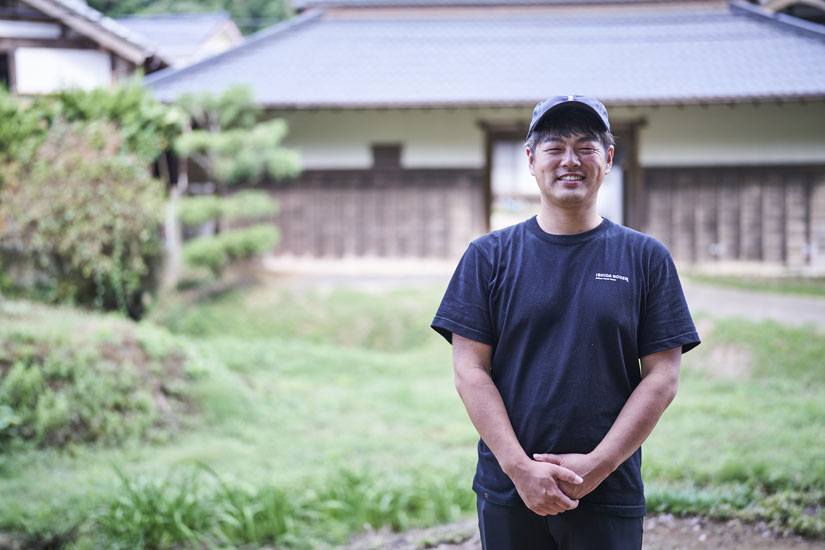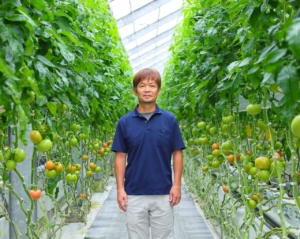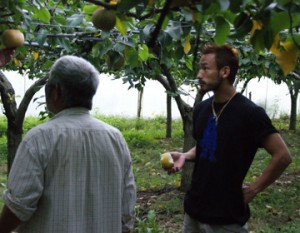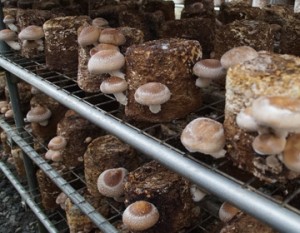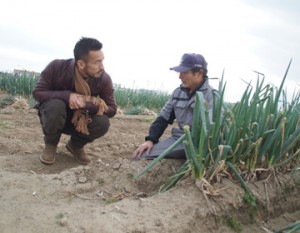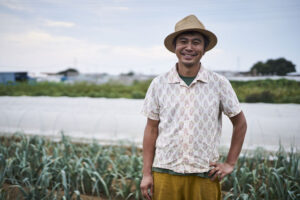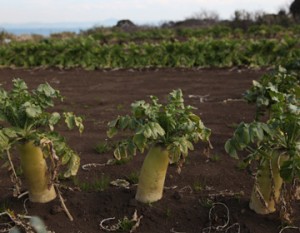By developing a unique aging method and branding sweet potatoes with a sugar content of 50 degrees or higher as “Golden Honey Sweet Potatoes,” we’ve created “a sweet potato everyone wants to eat—whether small, large, or oddly shaped.” In 2024, we achieved the opening of our company-operated cafe. We delve into the challenge of Ishida Farm, which succeeded in reducing food loss during production and giving sweet potatoes new value.
The Beginning of a Generations-Old Sweet Potato Farm’s Challenge
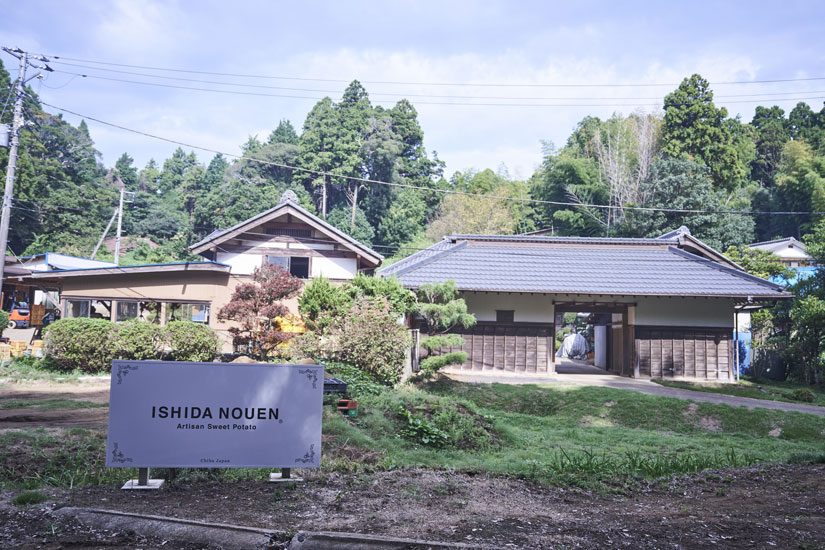
Katori City is located in northeastern Chiba Prefecture. The Sawara district, the city’s center, retains its historic streetscape from the Edo period when it prospered through water transport on the Tone River, and is designated a National Important Preservation District for Groups of Traditional Buildings. Meanwhile, the Kurimoto district in southern Katori City, where the Hokusō Plateau stretches out, is an area thriving in field crops and livestock farming.
Chiba Prefecture ranks as Japan’s third-largest sweet potato producer after Kagoshima and Ibaraki Prefectures. The Hokusō Plateau’s well-drained soil, rich in minerals and composed of Kanto loam, is considered ideal for sweet potato cultivation. Within Chiba, major production areas include Kurimoto in Katori City, Narita City, and Tako Town, all situated on this plateau.
It is Ishida Farm that is developing its business by fully utilizing the characteristics of Katori City. In Kurimoto, they are creating a new sweet potato brand called “Kinmitsu Imo” (Golden Honey Sweet Potato), and in Sawara, a popular tourist destination, they have opened the cafe “Kinmitsudo”.
I want to reduce sweet potato loss.
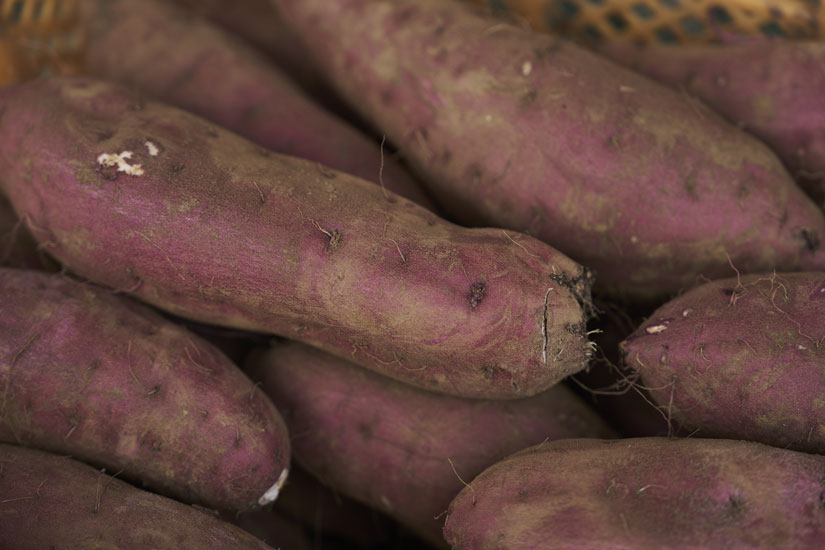
Ishida Farm has been growing sweet potatoes here since 1820, with Yudai Ishida representing the eighth generation. Annual sweet potato production is approximately 300 tons. For their “Kinmitsu Imo” brand sweet potatoes, known for their high sugar content and “rich, creamy, and moist texture,” they primarily use the “Beniharuka” variety.
After graduating from university, Mr. Ishida worked for three years at a company providing corporate PR consulting before taking over the family business. His decision stemmed from the high losses inherent in sweet potato production and his belief that “rather than focusing on mass production, I want to think about how to deliver them.”
*** Translated with www.DeepL.com/Translator (free version) ***
Approximately 70% of the sweet potatoes produced are irregularly shaped, too small, or too large. Despite their good taste, these so-called non-standard potatoes struggle to enter the market and are often discarded or sold at low prices. This led Mr. Ishida to conceive a brand that would be valued regardless of standards by cultivating high-sugar sweet potatoes. “Rather than mass-producing sweet potatoes that meet specifications, we prioritize how our customers will value them,” Ishida emphasizes. In 2018, Ishida Farm was incorporated, and development of the “Kinmitsu Imo” began. The origin of this idea traces back to when Ishida once asked his grandfather, “How can we make sweet potatoes sweeter?” The question stemmed from a desire to create sweet potatoes valued for taste, not shape, since freshly harvested ones aren’t sweet yet. Guided by his grandfather’s answer, he later scaled up this method, leading to the current differentiation.
*** Translated with www.DeepL.com/Translator (free version) ***
Establishing Short-Term Aging Methods and Soil Improvement in Vineyards
Typically, freshly harvested sweet potatoes have a sugar content of around 10 degrees, but this gradually increases as they mature. “Even with previous methods, we occasionally achieved 50 degrees, but we consistently push ours beyond 50 degrees,” says Mr. Ishida. Ishida Farm sells only sweet potatoes exceeding this 50-degree sugar content as “Golden Honey Sweet Potatoes.” When these Golden Honey Sweet Potatoes are roasted and then dried, their sugar content can sometimes reach 75 degrees. Achieving such Golden Honey Sweet Potatoes required careful refinement of the aging method and meticulous soil preparation in the fields.
*** Translated with www.DeepL.com/Translator (free version) ***
We want to eliminate the supply-demand gap caused by long-term aging.
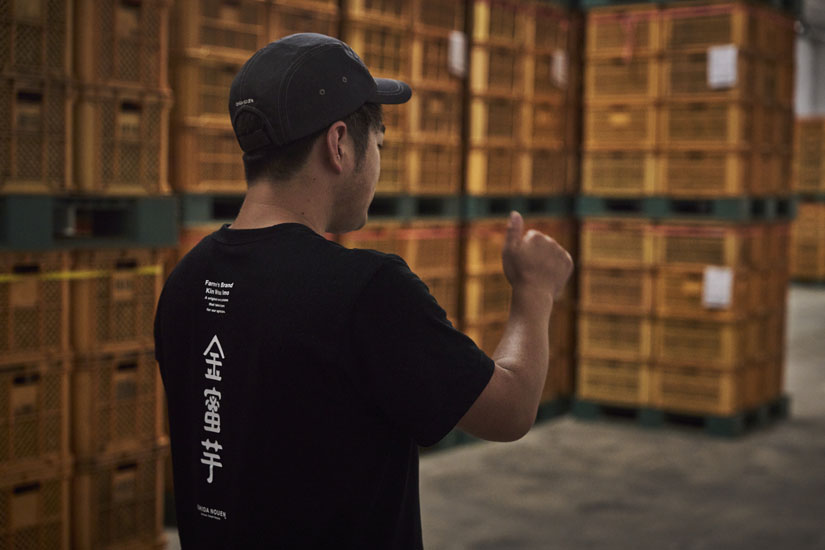
Sweet potatoes are typically harvested in autumn. After undergoing long-term aging for about 150 to 180 days, the starch within the sweet potatoes converts to sugar, increasing their sweetness. Ishida Farm also possesses a long-term aging facility where temperature and humidity can be controlled. Starting around March, they begin shipping sweet potatoes that have had their sugar content enhanced in this aging facility. However, Mr. Ishida points out, “During the peak demand period for roasted sweet potatoes from December to February, the maturation period is still too short, so we can only supply potatoes with a sugar content of around 30 to 40 degrees. Using the traditional maturation method creates a supply-demand gap.”
Therefore, Mr. Ishida embarked on developing a short-term maturation method to achieve year-round shipments of sweeter sweet potatoes.
*** Translated with www.DeepL.com/Translator (free version) ***
Development of a Short-Term Aging Chamber
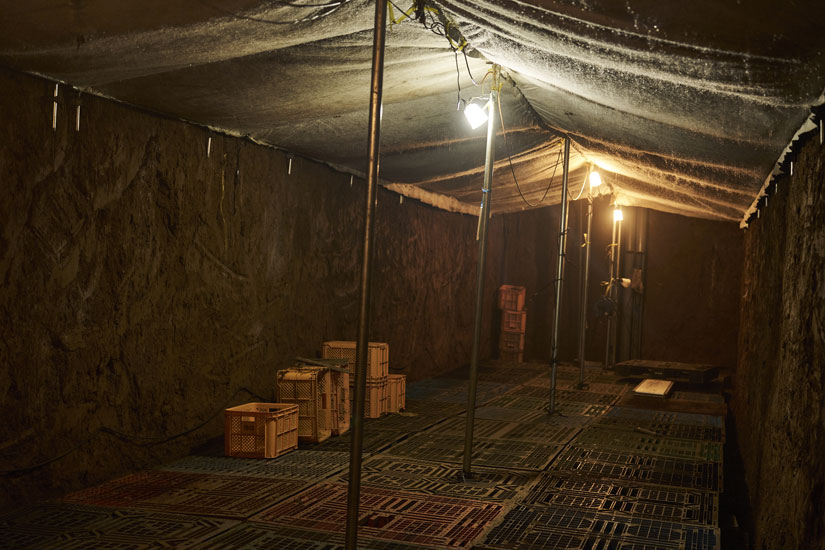
The short-term sweet potato ripening cellar developed by Ishida Farm is an underground chamber dug horizontally through the soil and enclosed by earthen walls. Its appearance, resembling a cave, is quite different from the impression of an artificially climate-controlled long-term ripening cellar. Mr. Ishida built this ripening cellar inspired by a story he heard from his grandfather, a senior farmer: “Sweet potatoes harvested in autumn became sweeter when stored underground.”
Mr. Ishida explains, “The earthen-walled storage chamber has slight temperature variations. Applying this stress through temperature fluctuations is the key to sweetening sweet potatoes quickly.” However, this environment also places stress on the sweet potatoes. This rapid aging method makes the sweet potatoes prone to spoilage, requiring several years to establish the technique.
*** Translated with www.DeepL.com/Translator (free version) ***
Developing sweet potatoes suitable for short-term ripening
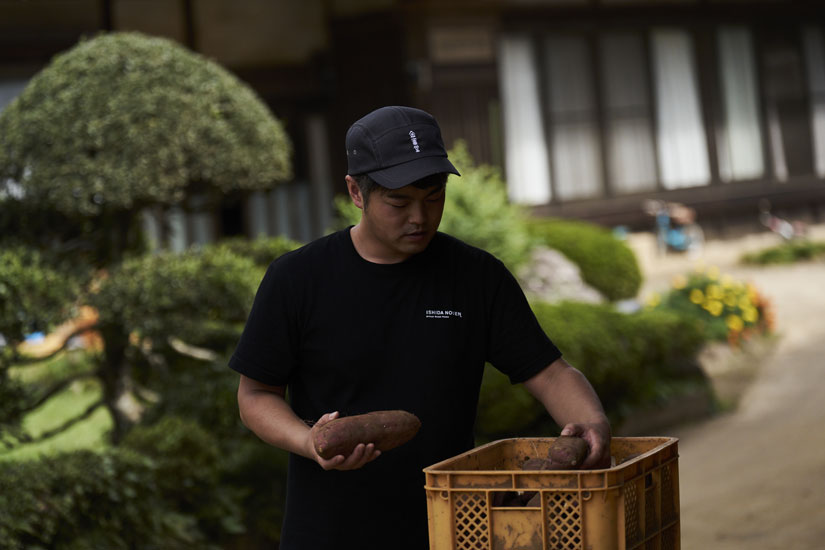
Mr. Ishida emphasizes, “Soil preparation is key to short-term ripening.” Cultivating sweet potatoes resilient enough to withstand demanding conditions made soil preparation in the fields indispensable.
“My father, who has farmed for many years, handles the core aspects of fertilizer design and soil preparation, consistently supporting the agricultural approach I envision.” Beyond this close collaborator, the Ishida family possesses several fields cultivated over centuries, creating an environment ideal for growing high-sugar sweet potatoes. This is precisely why Mr. Ishida confidently asserts that even if someone built a maturation facility identical to Ishida Farm’s, replicating their results would be far from simple.
As a result, Ishida Farm now consistently achieves a sugar content of 50 degrees within a remarkably short 40 days after harvest.
*** Translated with www.DeepL.com/Translator (free version) ***
From the challenge of branding to the stage of creating regional appeal

Ishida Farm does not ship through wholesalers. Instead, nearly all of its production is sold directly through department stores, high-end supermarkets, and its own online shop. This approach aims to enhance brand value by directly conveying the passion invested in the Kinmitsu sweet potatoes. This commitment led to the opening of the company-operated cafe, “Kinmitsudo.”
Opened the company-operated cafe “Kinmitsudo”

In 2024, Mr. Ishida opened “Kinnmitsudo,” a cafe specializing in sweet potato parfaits, in the heart of Sawara, a popular tourist destination.
“I want to deepen connections within Katori City itself,” he said, renovating a former tatami shop to blend harmoniously with the old townscape. The space, exuding Taisho-era romance, serves sweets and drinks generously featuring sweet potatoes. The highlight is the parfait supervised by Tenra Miyoshi, who runs a perpetually booked parfait specialty shop. Using sweet potato-based, highly talked-about sweets as a hook, it functions as one of the bases for introducing tourists to the farm.
While Kinmitsudo has become a popular weekend destination, Mr. Ishida shares his vision: “I want to further connect agriculture with tourism. By doing so, I hope to create even more opportunities for people to learn about sweet potatoes and Katori City.” Ishida Farm’s ongoing challenge to elevate the value of sweet potatoes is expanding into a stage where it enhances both agriculture and the region’s appeal.
*** Translated with www.DeepL.com/Translator (free version) ***



